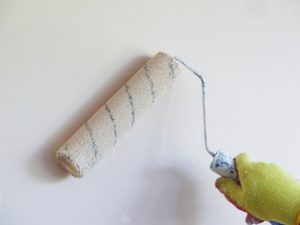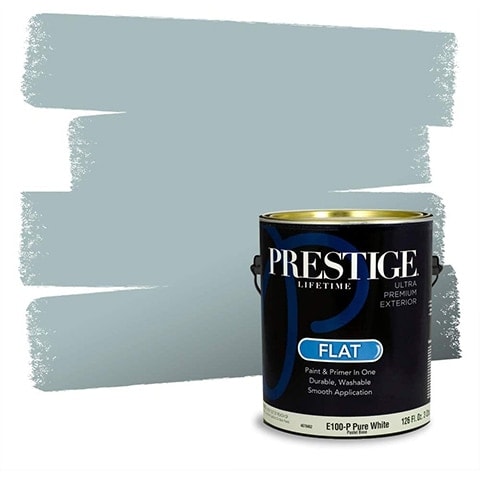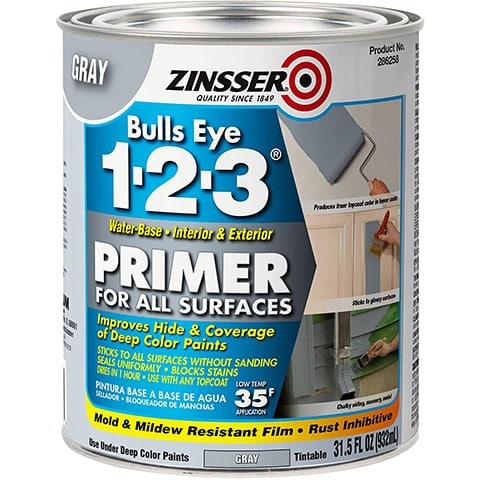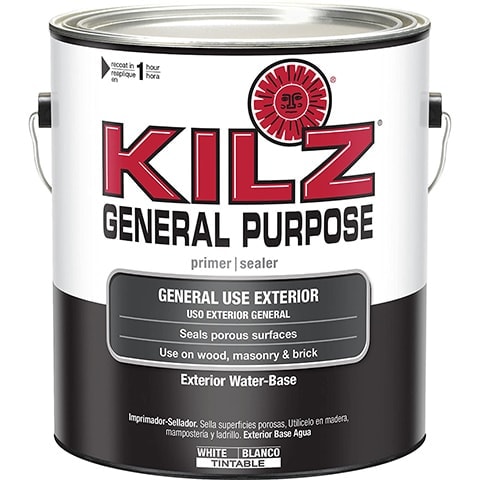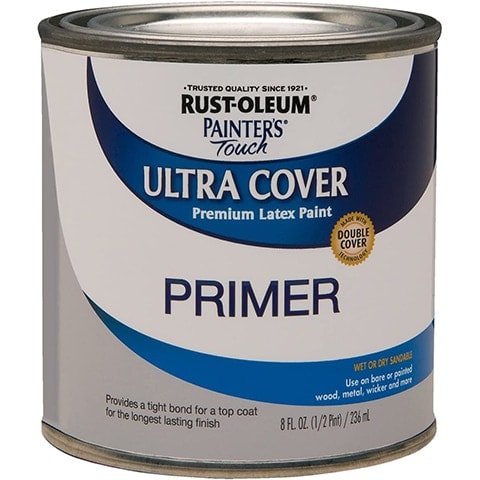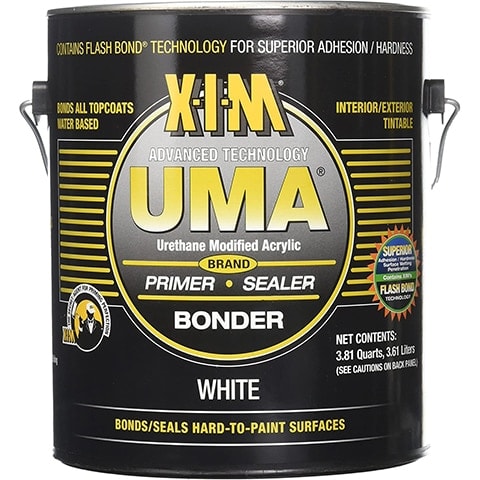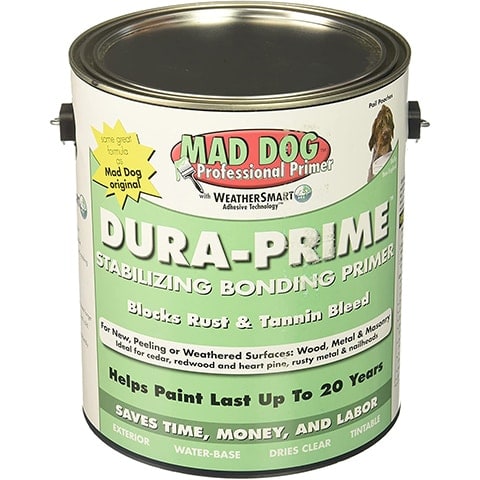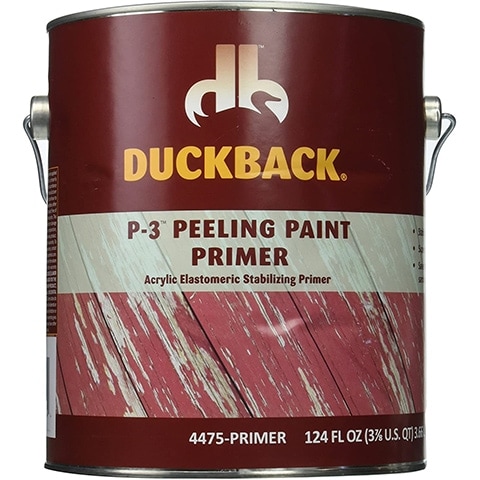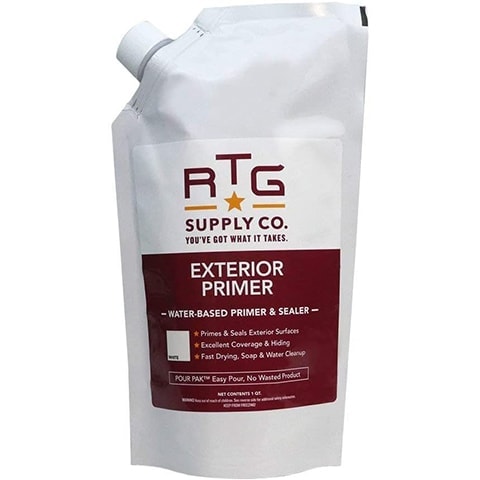10 Best Exterior Primers 2025 – Reviews & Top Picks
-
Pete Ortiz
- Last updated:
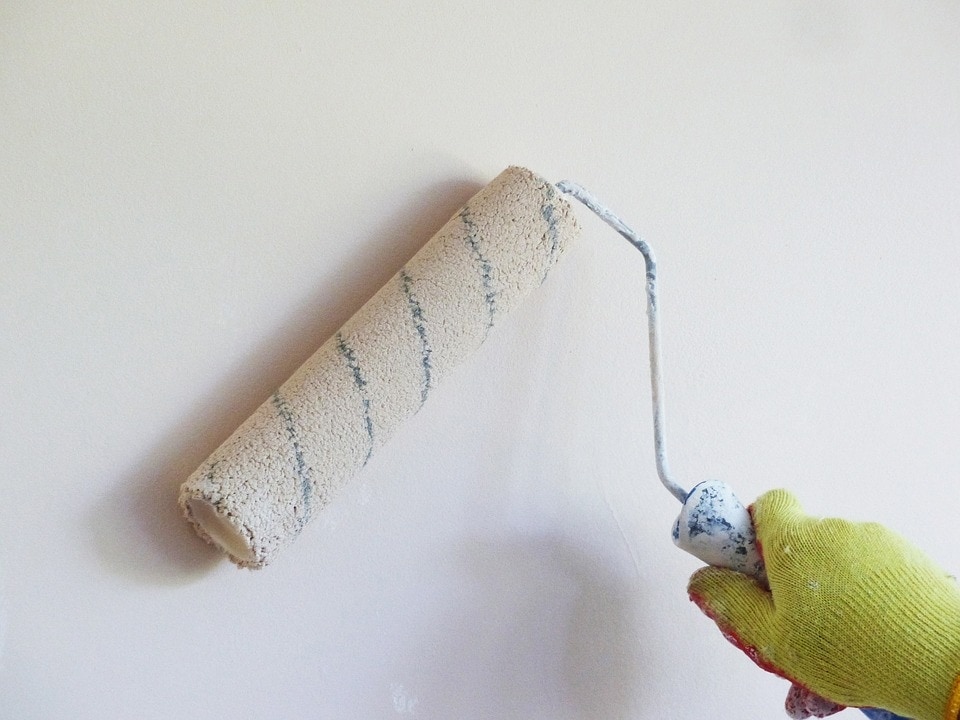
Priming an exterior surface for painting is a foregone conclusion. You have to do it. Besides providing additional protection for the paint, exterior primers increase paint durability. Without primer, you’re going to risk peeling the paint, especially in humid conditions.
Without a primer, paint is at risk of peeling, and you might feel that it was a low-quality paint that you used, but it was actually the absence of primer that caused the problem. With so many primers on the market, how do you know which one to choose?
We’ve compiled 10 reviews of exterior primers that you should consider. We’ve listed their features, benefits, and areas where they lack. On top of that, we’ve included a buyer’s guide, which should answer all your questions and help you make an educated purchase.
A Quick Comparison of Our Favorites
| Rating | Image | Product | Details | |
|---|---|---|---|---|
Best Overall

|
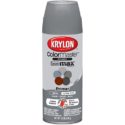
|
Krylon ColorMaster Paint + Primer |
|
CHECK PRICE |
Best Value

|
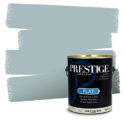
|
Prestige Paints Exterior Paint and Primer |
|
CHECK PRICE |

|
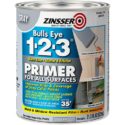
|
Rust-Oleum 286258 Primer |
|
CHECK PRICE |
|
|
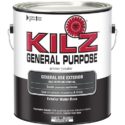
|
KILZ General Purpose Exterior Latex Primer |
|
CHECK PRICE |
|
|
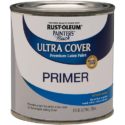
|
Rust-Oleum 1976730 Painters Touch |
|
CHECK PRICE |
The 10 Best Exterior Primers – Reviews 2025
1. Krylon ColorMaster Paint + Primer – Best Overall
The Krylon ColorMaster Paint + Primer is a delightful 2-in-1 product that comes in several colors, and it’s suitable for indoor or outdoor use. Perhaps the best part is this primer takes only 10 minutes to dry. The quality of the paint is good and its adhesion is second to none. Although this is a spray paint, you don’t have to worry about finger fatigue because they’ve used an EZ Touch Conical Tip for maximum control
You’ll see that this product gives you great coverage and works well in all types of weather, but it works well to soften uneven surfaces. If using indoors, open your windows to ventilate the odor.
After comparing this product to the rest on our list, we found that ColorMaster Paint + Primer was the best exterior primer overall.
- Dries quickly
- Strong adhesion
- Two-in-one
- Strong odor
2. Prestige Paints Exterior Paint and Primer – Best Value
Another 2-in-1 product, Prestige Paints can be used on a wide variety of exterior surfaces from wood to metal to masonry. Fortunately, it’s acrylic latex paint, so you’ll find that washing afterward is easy, and you’ll need only soap and water. And like most 1-gallon latex paints, it’s suitable for brushing, padding, or rolling, but you’ll want to dilute with water for use in a paint sprayer.
It’s an outdoor-only product and you’ll have to prepare the surface by removing peeling paint, mildew, and dirt. You’ll have to sand glossy surfaces before application and apply it when temperatures are over 50ºF. It needs about 1 to 2 hours to dry, and it will enable you to cover about 400 square feet per gallon.
You’ll get a matte finish, which hides surface imperfections or any dents and patches. Overall, we found that the Prestige Paint and Primer was the best exterior primer for the money.
- Covers rough patches
- Good coverage area
- Low VOC
- Application requires effort
- Takes 2 hours to dry
3. Rust-Oleum 286258 Primer – Premium Choice
Don’t get confused when you visit Amazon and see that the Rust-Oleum 286258 is branded as “Zinsser”. It’s a proprietary name for this water-based primer suitable for indoor and outdoor use. You can apply it to several previously painted surfaces such as metal, wood, and concrete. It has strong adhesion, and you can use it over any oil or latex-covered surfaces. Besides being mold and mildew-resistant, it’s non-corrosive, so no worries about rust.
And don’t have to worry about sanding, either, as this product will stick to just about any surface. After the initial application, you’ll need to give it about an hour before you can recoat, and you’ll be able to get about 100 square feet coverage. To be fair, 100 feet of coverage from 1 gallon is at the low end of the spectrum.
If applied in high humidity, this product may chip and peel sooner than anticipated. That will result in you having to apply another coat, thereby incurring more expenses. On the upside, you can use this product over vivid colors as it does a good job of hiding and covering.
- Covers bright colors
- Works well on heavy stains
- Strong rust resistance
- Chips easily
4. KILZ General Purpose Exterior Latex Primer
KILZ should be used primarily on wood, masonry, and brick, and isn’t meant for flooring or glossy and mildew prone surfaces. You’ll find that this product works well as a sealant on porous surfaces, but only outdoors. Apply with brush, roller, or sprayer, and it’ll require about an hour for it to dry before you can topcoat. One gallon will cover about 300 to 400 square feet.
You’ll have to prepare the surface before application by cleaning any dirt, rust, or peeling paint. The adhesion is pretty good, but you’ll have to mix it well before use. If you’re sensitive to strong odors, KILZ doesn’t have an overpowering smell. You might sense it, but it’s not repulsive. It’s just a pity that this product doesn’t work well on all surfaces.
- Good coverage area
- Great sealant
- Relatively fast drying time
- Cannot be used on all surfaces
5. Rust-Oleum 1976730 Painters Touch
The Rust-Oleum Painters Touch sets itself apart from several primers by ensuring that users can apply their product indoors and outdoors. It’s applicable to surfaces such as metal, plaster, unglazed ceramic, wood, and masonry. It’s a water-based acrylic formula that provides good protection and works well to ensure that you don’t have any chipping problems.
This is only an 8-ounce container, so you’ll be able to cover a surface of about 120 square feet. It’ll need about 30 minutes for the paint to dry, but it does a great job of minimizing surface imperfections. Application is easy and smooth, but you’ll have to use sandpaper before application to prepare the surface. You’ll also have to apply degreaser and let the area dry before applying the primer.
You’ve got a choice of quite a few colors, and you’ll find that this primer provides a tight bond for the topcoat. That’ll definitely help for the product to last long. The thing with this product is that it requires quite a lot of preparation before you can use it, and this size doesn’t provide great coverage.
- Good protection
- Tight bond
- Long-lasting
- Requires lots of preparation
- Poor coverage area
6. INSL-X Acrylic Water Sealer Primer
You can use the INSL-X Acrylic water-based sealer inside and outside, but you’ll have to significant bit of prep to ensure that the surface is completely clean before applying the primer. The sealing works and there’s no bleeding through the finish coat, but you’ll see a significant color change, so that may affect the number of finish coats that you’ll need to do.
It’ll give you a good base coat for latex and oil-based finishes, and it needs about 1 hour to dry before you can apply the topcoat. You’ll have to apply the INSL-X Acrylic when the temperatures are between 50 and 90ºF, but don’t use it on exterior wood floor surfaces.
One gallon covers a surface area of 300 to 400 square feet. It does a decent job of protecting against staining and decreases the chances of getting mold. It also comes with low-volatile organic compounds (VOC), so you don’t have to worry about chemicals and smelling an unpleasant odor.
- Good base coat
- Quick-drying time
- Low VOC
- Can’t be used on exterior wood surfaces
7. XIM 11051 Bonder and Primer/Sealer
The XIM 11051 UMA is the most unique product on this list. The 3-in-1 application covers bonding, priming, and sealing, so it should save you some time – in theory. XIM’s Flash Bond Technology claims to provide long-term durability, but that remains to be seen.
It’s an indoor/outdoor product and suitable for areas such as unfinished wood and galvanized down spouts. You’ll need to sand all surfaces before applying, which is time-consuming and tedious. Other products of this variety don’t require sanding. On a positive note, the product doesn’t have much of an odor due to the low VOC, and cleaning up requires only water and soap.
On the downside, we noticed some cracking and blistering caused by moisture within just a few weeks. Despite being a 3-in-1 solution, we’re not sure XIM does what it says it can do.
- Good bond
- Low odor
- Durable
- Sanding required pre-application
8. MAD DOG MDP100 Exterior Primer
If you want a primer that’s only for exterior use, then MAD DOG might be the one for you. It works well to stop peeling and blocks rust, as well as tanning bleeding, but you’ll have to use at least two coats. MDP100 is for new, peeling, and weathered surfaces, but you’ll have to sand the desired area before application. This product will take about an hour to dry, and you can recoat after about 2 hours.
With the 1-gallon container, you’ll should be able to cover a surface of 300 square feet. You shouldn’t use flat or glossy paint over this product, and it’s not meant to be used on walking surfaces. The problem with MDP100 is that it’s thin. That means you’ll have to apply multiple coats, resulting in possibly not covering 300 square feet. That also means more effort exerted and more time spent doing the job.
- Blocks rust
- Decent drying time
- Multiple coats
- Thin coverage
- More effort needed
- Exterior use only
9. Duckback Peeling Paint Exterior Primer
Duckback made this primer to prevent peeling, and it does a relatively decent job of that. They’ve used an acrylic-based primer so that you can use it for priming latex and oil-based finishes. It comes in a 1-gallon container, but don’t be surprised to find that you might need to do several coats so that you get the finish that you desire. It doesn’t provide the strongest texture.
The thing with Duckback is that it’s a brand that hasn’t really established a name for itself yet. So, you’re kind of taking a risk on a product that not many people have used. It’s an average product that could use several improvements so that it can compete with some of the better-known primers.
- Prevents peeling
- No brand reputation
- Multiple coats needed
10. RTG Exterior Primer
You’ll need to do about two coats with this primer to get the best result, but it does provide good adhesion on exterior surfaces such as metal, stucco, and composites. It works well to hide those unfavorable spots, and it dries after an hour if you use it when it’s 72ºF.
You can also use it on as a sealer for shutters, windows and moldings. If you’re pedantic about the environment, you’ll be glad to know that it’s environmentally friendly and has low VOC, so you won’t smell a strong odor. You’ll get about 80 to 100 square feet of coverage area with a quart, but this product is still relatively unknown in the market. That makes it difficult to determine if it really is generally of a good quality because not a lot of people have used it.
- Quick-drying time
- Environmentally friendly
- Multiple coats needed
- New product
Buyer’s Guide – Picking the Best Exterior Primers
Choosing the right product is important, it’s not enough to know only what the features of each product are and their strong points, as well as drawbacks. You have to know what to look out for, and that’s the purpose of the buyer’s guide. It will guide you about the various aspects of exterior primers that you have to look at to determine the one that will meet your needs. It will answer the questions that you need to know so that you can decide which type of exterior primer you should go for.
Different Types of Primers
Latex
These are water-based and mostly suitable for prepping unfinished drywall. Latex primers usually dry fairly quickly and are less brittle than oil-based primers. That’s one of the reasons that they are less prone to cracking and peeling. You’ll find that latex primers are good at making the surface even and are also good for covering and sealing stains resulting from crayons or smoke. Oil and shellac-based primers tend to be more effective at covering stains.
The great thing about latex primers is that they tend to have a very low odor because most of them have a low to zero VOC formula. That makes them a lot healthier than oil and shellac-based primers. In most cases, they are also more environmentally friendly that the other two counterparts.
Oil
This is the most common type of primer, and they have been an industry standard for many years. One of the things that makes this primer so appealing is that it works with oil and latex paints. That’s why you can apply them to various surfaces, as well as use them indoors and outdoors.
What you’ll find with oil-based primers is that they have a reputation for being called stain killers. That’s because they prevent stains from showing through the new coat that you apply. You can also use oil-based primers on unfinished wood because they work well to seal the porous surface of the wood.
You’ll also find that wood releases tannins, which oil-based primers work well to stop from bleeding through the paint. The problem with this type of primer is that they tend to take a while to dry. It can take several hours for an oil-based primer to be ready before you can apply a coat. In most cases, you’ll have to use sandpaper on the surface and clean it thoroughly to prep it before applying the primer.
Shellac
This primer has mainly been used to seal wood. If you want a primer that works well inside, then the shellac primer is the go-to choice. Shellac primers have a reputation for being great stain-blockers, doing a good job of preventing damage from rust, water and smoke. Another perk of shellac primer is that you can use them with oil and latex-based paints.
The feature that might put you off from shellac primers is that they emit more fumes than the other counterparts, so that means you’ll smell more of an odor from shellac than from the others.
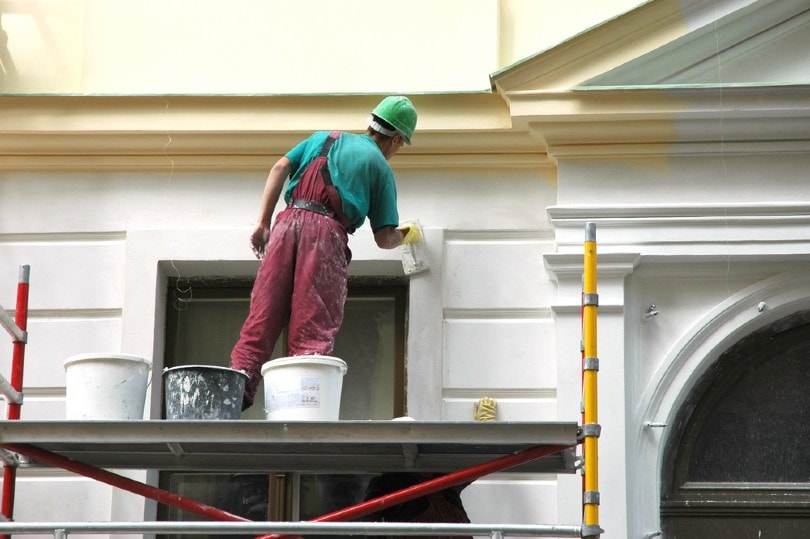
Drying
How much time a primer needs to dry before you can apply the coat is another aspect to consider. With some spray primers, you need to wait only about 10 minutes before applying another coat of paint. With others, you might need to wait several hours. That’ll require you to plan your project so that you can finish everything on the same day if you have to wait hours for the primer to dry before applying paint.
Generally, latex primer tends to dry the quickest of the three, needing an hour or less. An oil-based primer tends to take quite a few hours to dry before you can apply first coat of paint.
Stained or Shiny?
It’s important to decide how you want the surface to look after you’ve applied primer and paint. With a matte finish, you’ll find that it works really well to eradicate any stains and provide an even surface while the others will give you a shiny finish.
Applying Primer
You should use a primer on pretty much any project, regardless of if it’s a new drywall or bare metal. Painting a surface without priming it before will usually require a few coats, and you might find that the paint doesn’t stick so well to the surface.
It’s done basically the same way as painting, but you’ll have to clean the surface thoroughly before you apply the primer. To clean, use water, soap and a brush, then scrape any peeling paint or patch up holes before applying primer.
Most primers and primer/paint combos can be used with a brush, roller, or sprayer (slightly diluted). However, when using oil-based primers, natural bristle brushes work best.
Make sure that your workspace is ventilated so that you don’t inhale the fumes from the primer. After you’ve applied the primer, you shouldn’t wait to look after it has dried to apply the paint. Every primer has different drying time, so check the label to determine when you can start painting.
You May Also Like: Best Pressure Washer Detergents
Conclusion
Our 10 reviews showed you which exterior primers you can consider and exactly what they offer. After comparing all of the products, we found that the Krylon ColorMaster Paint + Primer is the best exterior primer overall. It has outstanding features and works really well.
Getting a high-quality product that can complete the job is important, but it’s also important the price isn’t exorbitant and that it is justifiable because of its features. That’s why we found that Prestige Paints Exterior Paint and Primer to be the best exterior primer for the money. If you wanted to know which product we thought was the premium choice, we’d say that you say take a look at Rust-Oleum 286258 Primer.
The reviews that we’ve provided, coupled with the buyer’s guide, should have answered most, if not all, of your questions about what to look out for when deciding which exterior primer to purchase. We’ve highlighted every product’s features, their benefits and what they don’t provide, thus saving you a lot of time doing research.
Featured Image: Pixabay
Contents

